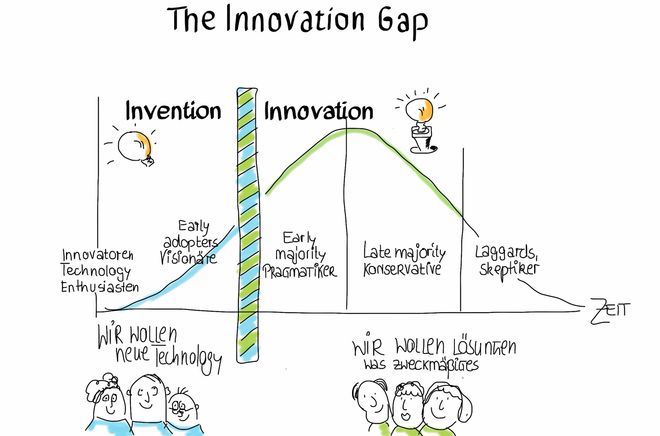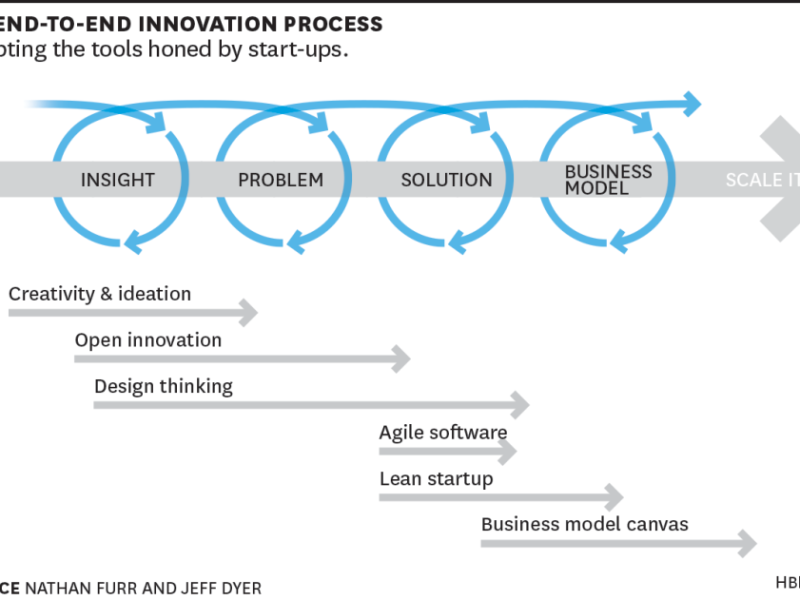Introduction to the Innovation Gap
The innovation gap represents the disconnect between the creation of groundbreaking technologies (invention) and their widespread adoption (innovation).
While inventions like AI, blockchain, and AR/VR dominate headlines, many struggle to transition from early adopters to the mainstream. This gap often stems from mismatched user needs, accessibility barriers, or poor user experience (UX) design.
As a UX designer, understanding this gap is critical. By aligning products with user behavior, empathy, and iterative testing, we can accelerate adoption and create inclusive solutions.
This post dives into the psychology of innovation adoption, real-world case studies, and UX strategies to bridge the gap.
Understanding the Diffusion of Innovations Theory
Everett Rogers’ Diffusion of Innovations theory (1962) categorizes adopters into five groups:
- Innovators (risk-takers, 2.5%)
- Early Adopters (visionaries, 13.5%)
- Early Majority (pragmatists, 34%)
- Late Majority (skeptics, 34%)
- Laggards (traditionalists, 16%)
Key Insight: The “chasm” between early adopters and the early majority is where most innovations fail. UX design plays a pivotal role in crossing this chasm by addressing usability and trust barriers.
The Role of UX Design in Bridging the Gap
1. Designing for Early Adopters vs. the Majority
Early adopters crave cutting-edge features, while the majority prioritize simplicity and reliability. For example:
- Tesla’s Autopilot: Early adopters embraced beta features, but mainstream users demanded safety assurances and intuitive controls (Nielsen Norman Group, 2021).
2. Reducing Friction Through Prototyping
Iterative prototyping helps identify pain points. Tools like Figma and InVision allow rapid testing with diverse user groups.
3. Accessibility as a Catalyst for Adoption
Complying with WCAG 2.1 standards ensures products are usable by laggards and skeptics. Microsoft’s inclusive design principles exemplify this approach (Microsoft Design, 2023).
Case Studies: Successes and Failures
Success: iPhone’s Disruptive UX
Apple bridged the innovation gap by replacing physical keyboards with a touch interface, coupled with app store ecosystems that catered to all adopter categories.
Failure: Google Glass
Despite hype, Glass ignored privacy concerns and social acceptance—key barriers for the late majority (Harvard Business Review, 2015).
Strategies for Designing Across Adoption Stages
- Personalized Onboarding
Tailor tutorials based on user tech-savviness. Duolingo uses adaptive onboarding to engage both novices and experts. - Feedback Loops
Implement in-app surveys or A/B testing to gather insights from conservative users. - Community Building
Foster peer validation through forums or social proof (e.g., Slack’s early reliance on tech communities).
Future Trends and the Innovation Gap
Emerging technologies like Web3 and metaverse platforms face adoption hurdles. UX designers must prioritize:
- Ethical AI: Transparent interfaces to build trust.
- Cross-Platform Continuity: Seamless transitions between devices.
Conclusion: Closing the Gap with Empathy
Bridging the innovation gap requires more than technical prowess—it demands empathy, adaptability, and relentless user-centricity. By leveraging UX research, inclusive design, and iterative testing, designers can turn groundbreaking inventions into indispensable innovations.
SEO Keywords: innovation gap, diffusion of innovations, UX design strategies, technology adoption lifecycle, early adopters vs laggards.
References
- Rogers, E. M. (1962). Diffusion of Innovations. Link
- Nielsen, J. (2021). Innovator and Early Adopter Engagement. Nielsen Norman Group.
- Microsoft Inclusive Design Toolkit. (2023). Microsoft Design.


